|
[1]
|
Dupont C, Armant DR, Brenner CA (2009) Epigenetics: Definition, mechanisms and clinical perspective. Semin Reprod Med 27: 351-357. doi: 10.1055/s-0029-1237423

|
|
[2]
|
Dawson MA, Kouzarides T (2012) Cancer epigenetics: From mechanism to therapy. Cell 150: 12-27. doi: 10.1016/j.cell.2012.06.013

|
|
[3]
|
Esteller M (2008) Molecular origins of cancer: Epigenetics in cancer. New Engl J Med 358: 1148-1159+1096. doi: 10.1056/NEJMra072067

|
|
[4]
|
Laird PW (2005) Cancer epigenetics. Hum Mol Genet 14: R65-R76. doi: 10.1093/hmg/ddi113

|
|
[5]
|
Okugawa Y, Grady WM, Goel A (2015) Epigenetic Alterations in Colorectal Cancer: Emerging Biomarkers. Gastroenterology 149: 1204-1225e1212. doi: 10.1053/j.gastro.2015.07.011

|
|
[6]
|
Deng D, Liu Z, Du Y (2010) Epigenetic Alterations as Cancer Diagnostic, Prognostic, and Predictive Biomarkers. Adv Genet 71: 126-176.
|
|
[7]
|
Herceg Z, Hainaut P (2007) Genetic and epigenetic alterations as biomarkers for cancer detection, diagnosis and prognosis. Mol Oncol 1: 26-41. doi: 10.1016/j.molonc.2007.01.004

|
|
[8]
|
Dekker C (2007) Solid-state nanopores. Nat Nanotechnol 2: 209-215. doi: 10.1038/nnano.2007.27

|
|
[9]
|
Keyser UF (2011) Controlling molecular transport through nanopores. J R Soc Interface 8: 1369-1378. doi: 10.1098/rsif.2011.0222

|
|
[10]
|
Siwy ZS, Howorka S (2010) Engineered voltage-responsive nanopores. Chem Soc Rev 39: 1115-1132. doi: 10.1039/B909105J

|
|
[11]
|
Garaj S, Hubbard W, Reina A, et al. (2010) Graphene as a subnanometre trans-electrode membrane. Nature 467: 190-193. doi: 10.1038/nature09379

|
|
[12]
|
Siwy ZS, Davenport M (2010) Nanopores: Graphene opens up to DNA. Nat Nanotechnol 5: 697-698. doi: 10.1038/nnano.2010.198

|
|
[13]
|
Tada K, Haruyama J, Yang HX, et al. (2011) Graphene magnet realized by hydrogenated graphene nanopore arrays. Appl Phys Lett 99: 183111. doi: 10.1063/1.3653286

|
|
[14]
|
Ding S, Gao C, Gu LQ (2009) Capturing single molecules of immunoglobulin and ricin with an aptamer-encoded glass nanopore. Anal Chem 81: 6649-6655. doi: 10.1021/ac9006705

|
|
[15]
|
Gu LQ, Shim JW (2010) Single molecule sensing by nanopores and nanopore devices. Analyst 135: 441-451. doi: 10.1039/B907735A

|
|
[16]
|
Fertig N, Meyer C, Blick RH, et al. (2001) Microstructured glass chip for ion-channel electrophysiology. Phys Rev E Stat Nonlin Soft Matter Phys 64: 409011-409014.
|
|
[17]
|
Li J, Stein D, McMullan C, et al. (2001) Ion-beam sculpting at nanometre length scales. Nature 412: 166-169. doi: 10.1038/35084037

|
|
[18]
|
Storm AJ, Chen JH, Ling XS, et al. (2003) Fabrication of solid-state nanopores with single-nanometre precision. Nat Mater 2: 537-540. doi: 10.1038/nmat941

|
|
[19]
|
Kasianowicz JJ, Brandin E, Branton D, et al. (1996) Characterization of individual polynucleotide molecules using a membrane channel. Proc Natl Acad Sci U S A 93: 13770-13773. doi: 10.1073/pnas.93.24.13770

|
|
[20]
|
Laszlo AH, Derrington IM, Brinkerhoff H, et al. (2013) Detection and mapping of 5-methylcytosine and 5-hydroxymethylcytosine with nanopore MspA. Proc Natl Acad Sci U S A 110: 18904-18909. doi: 10.1073/pnas.1310240110

|
|
[21]
|
Laszlo AH, Derrington IM, Ross BC, et al. (2014) Decoding long nanopore sequencing reads of natural DNA. Nat Biotechnol 32: 829-833.
|
|
[22]
|
Wang Y, Montana V, Grubišić V, et al. (2015) Nanopore sensing of botulinum toxin type B by discriminating an enzymatically cleaved peptide from a synaptic protein synaptobrevin 2 derivative. ACS Appl Mater Inter 7: 184-192. doi: 10.1021/am5056596

|
|
[23]
|
Liu J, Eren E, Vijayaraghavan J, et al. (2012) OccK channels from Pseudomonas aeruginosa exhibit diverse single-channel electrical signatures but conserved anion selectivity. Biochemistry 51: 2319-2330. doi: 10.1021/bi300066w

|
|
[24]
|
Mohammad MM, Iyer R, Howard KR, et al. (2012) Engineering a rigid protein tunnel for biomolecular detection. J Am Chem Soc 134: 9521-9531. doi: 10.1021/ja3043646

|
|
[25]
|
Cheneke BR, van den Berg B, Movileanu L (2015) Quasithermodynamic contributions to the fluctuations of a protein nanopore. ACS Chem Biol 10: 784-794. doi: 10.1021/cb5008025

|
|
[26]
|
Wang HY, Li Y, Qin LX, et al. (2013) Single-molecule DNA detection using a novel SP1 protein nanopore. Chem Commun (Camb) 49: 1741-1743. doi: 10.1039/c3cc38939a

|
|
[27]
|
Wang S, Haque F, Rychahou PG, et al. (2013) Engineered nanopore of phi29 dna-packaging motor for real-time detection of single colon cancer specific antibody in serum. ACS Nano 7: 9814-9822. doi: 10.1021/nn404435v

|
|
[28]
|
Wu D, Bi S, Zhang L, et al. (2014) Single-molecule study of proteins by biological nanopore sensors. Sensors (Basel) 14: 18211-18222. doi: 10.3390/s141018211

|
|
[29]
|
Venkatesan BM, Bashir R (2011) Nanopore sensors for nucleic acid analysis. Nat Nanotechnol 6: 615-624. doi: 10.1038/nnano.2011.129

|
|
[30]
|
Hall AR, Scott A, Rotem D, et al. (2010) Hybrid pore formation by directed insertion of +Ý-haemolysin into solid-state nanopores. Nat Nanotechnol 5: 874-877. doi: 10.1038/nnano.2010.237

|
|
[31]
|
Bell NA, Engst CR, Ablay M, et al. (2012) DNA origami nanopores. Nano Lett 12: 512-517. doi: 10.1021/nl204098n

|
|
[32]
|
Iqbal SM, Akin D, Bashir R (2007) Solid-state nanopore channels with DNA selectivity. Nat Nanotechnol 2: 243-248. doi: 10.1038/nnano.2007.78

|
|
[33]
|
Tinazli A, Tang J, Valiokas R, et al. (2005) High-affinity chelator thiols for switchable and oriented immobilization of histidine-tagged proteins: a generic platform for protein chip technologies. Chemistry 11: 5249-5259. doi: 10.1002/chem.200500154

|
|
[34]
|
Wei R, Pedone D, Zurner A, et al. (2010) Fabrication of metallized nanopores in silicon nitride membranes for single-molecule sensing. Small 6: 1406-1414. doi: 10.1002/smll.201000253

|
|
[35]
|
Yusko EC, Johnson JM, Majd S, et al. (2011) Controlling protein translocation through nanopores with bio-inspired fluid walls. Nat Nanotechnol 6: 253-260. doi: 10.1038/nnano.2011.12

|
|
[36]
|
Wang D, Harrer S, Luan B, et al. (2014) Regulating the transport of DNA through Biofriendly Nanochannels in a thin solid membrane. Sci Rep 4: 3985.
|
|
[37]
|
Branton D, Deamer DW, Marziali A, et al. (2008) The potential and challenges of nanopore sequencing. Nat Nanotechnol 26: 1146-1153.
|
|
[38]
|
Cherf GM, Lieberman KR, Rashid H, et al. (2012) Automated forward and reverse ratcheting of DNA in a nanopore at 5-A precision. Nat Biotechnol 30: 344-348. doi: 10.1038/nbt.2147

|
|
[39]
|
Kasianowicz JJ, Brandin E, Branton D, et al. (1996) Characterization of individual polynucleotide molecules using a membrane channel. Proc Natl Acad Sci U S A 93: 13770-13773. doi: 10.1073/pnas.93.24.13770

|
|
[40]
|
Manrao EA, Derrington IM, Laszlo AH, et al. (2012) Reading DNA at single-nucleotide resolution with a mutant MspA nanopore and phi29 DNA polymerase. Nat Biotechnol 30: 349-353. doi: 10.1038/nbt.2171

|
|
[41]
|
An N, Fleming AM, White HS, et al. (2012) Crown ether-electrolyte interactions permit nanopore detection of individual DNA abasic sites in single molecules. Proc Natl Acad Sci U S A 109: 11504-11509. doi: 10.1073/pnas.1201669109

|
|
[42]
|
Wallace EV, Stoddart D, Heron AJ, et al. (2010) Identification of epigenetic DNA modifications with a protein nanopore. Chem Commun(Camb) 46: 8195-8197. doi: 10.1039/c0cc02864a

|
|
[43]
|
Shim J, Kim Y, Humphreys GI, et al. (2015) Nanopore-based assay for detection of methylation in double-stranded DNA fragments. ACS Nano 9: 290-300. doi: 10.1021/nn5045596

|
|
[44]
|
Bayley H, Cremer PS (2001) Stochastic sensors inspired by biology. Nature 413: 226-230. doi: 10.1038/35093038

|
|
[45]
|
Gu LQ, Shim JW (2010) Single molecule sensing by nanopores and nanopore devices. Analyst 135: 441-451. doi: 10.1039/B907735A

|
|
[46]
|
Howorka S, Siwy Z (2009) Nanopore analytics: sensing of single molecules. Chem Soc Rev 38: 2360-2384. doi: 10.1039/b813796j

|
|
[47]
|
Luan B, Peng H, Polonsky S, et al. (2010) Base-by-base ratcheting of single stranded DNA through a solid-state nanopore. Phys Rev Lett 104.
|
|
[48]
|
Asandei A, Chinappi M, Lee JK, et al. (2015) Placement of oppositely charged aminoacids at a polypeptide termini determines the voltage-controlled braking of polymer transport through nanometer-scale pores. Sci Rep 5: 10419. doi: 10.1038/srep10419

|
|
[49]
|
Mereuta L, Roy M, Asandei A, et al. (2014) Slowing down single-molecule trafficking through a protein nanopore reveals intermediates for peptide translocation. Sci Rep 4: 3885.
|
|
[50]
|
Deamer D (2010) Nanopore analysis of nucleic acids bound to exonucleases and polymerases. Annu Rev Biophys 39: 79-90. doi: 10.1146/annurev.biophys.093008.131250

|
|
[51]
|
Olasagasti F, Lieberman KR, Benner S, et al. (2010) Replication of individual DNA molecules under electronic control using a protein nanopore. Nat Nanotechnol 5: 798-806. doi: 10.1038/nnano.2010.177

|
|
[52]
|
Chu J, Gonzalez-Lopez M, Cockroft SL, et al. (2010) Real-time monitoring of DNA polymerase function and stepwise single-nucleotide DNA strand translocation through a protein nanopore. Angew Chem Int Ed Engl 49: 10106-10109. doi: 10.1002/anie.201005460

|
|
[53]
|
Benner S, Chen RJ, Wilson NA, et al. (2007) Sequence-specific detection of individual DNA polymerase complexes in real time using a nanopore. Nat Nanotechnol 2: 718-724. doi: 10.1038/nnano.2007.344

|
|
[54]
|
Asandei A, Iftemi S, Mereuta L, et al. (2014) Probing of various physiologically relevant metals: Amyloid-β peptide interactions with a lipid membrane-immobilized protein nanopore. J Membrane Biol 247: 523-530. doi: 10.1007/s00232-014-9662-z

|
|
[55]
|
Asandei A, Schiopu I, Iftemi S, et al. (2013) Investigation of Cu2+ binding to human and rat amyloid fragments Aβ (1-16) with a protein nanopore. Langmuir 29: 15634-15642. doi: 10.1021/la403915t

|
|
[56]
|
Ying YL, Wang HY, Sutherland TC, et al. (2011) Monitoring of an ATP-binding aptamer and its conformational changes using an α-hemolysin nanopore. Small 7: 87-94. doi: 10.1002/smll.201001428

|
|
[57]
|
Clarke J, Wu HC, Jayasinghe L, et al. (2009) Continuous base identification for single-molecule nanopore DNA sequencing. Nat Nanotechnol 4: 265-270. doi: 10.1038/nnano.2009.12

|
|
[58]
|
Branton D, Deamer DW, Marziali A, et al. (2008) The potential and challenges of nanopore sequencing. Nat Biotechnol 26: 1146-1153. doi: 10.1038/nbt.1495

|
|
[59]
|
Bayley H (2006) Sequencing single molecules of DNA. Curr Opin Chem Biol 10: 628-637. doi: 10.1016/j.cbpa.2006.10.040

|
|
[60]
|
Bartel DP (2004) MicroRNAs: Genomics, Biogenesis, Mechanism, and Function. Cell 116: 281-297. doi: 10.1016/S0092-8674(04)00045-5

|
|
[61]
|
Carthew RW, Sontheimer EJ (2009) Origins and Mechanisms of miRNAs and siRNAs. Cell 136: 642-655. doi: 10.1016/j.cell.2009.01.035

|
|
[62]
|
Calin GA, Croce CM (2006) MicroRNA signatures in human cancers. Nat Rev Cancer 6: 857-866. doi: 10.1038/nrc1997

|
|
[63]
|
Chen X, Ba Y, Ma L, et al. (2008) Characterization of microRNAs in serum: A novel class of biomarkers for diagnosis of cancer and other diseases. Cell Res 18: 997-1006. doi: 10.1038/cr.2008.282

|
|
[64]
|
Mitchell PS, Parkin RK, Kroh EM, et al. (2008) Circulating microRNAs as stable blood-based markers for cancer detection. Proc Natl Acad Sci U S A 105: 10513-10518. doi: 10.1073/pnas.0804549105

|
|
[65]
|
Wang Y, Zheng D, Tan Q, et al. (2011) Nanopore-based detection of circulating microRNAs in lung cancer patients. Nat Nanotechnol 6: 668-674. doi: 10.1038/nnano.2011.147

|
|
[66]
|
Tian K, He Z, Wang Y, et al. (2013) Designing a polycationic probe for simultaneous enrichment and detection of microRNAs in a nanopore. ACS Nano 7: 3962-3969. doi: 10.1021/nn305789z

|
|
[67]
|
Zhang X, Wang Y, Fricke BL, et al. (2014) Programming nanopore ion flow for encoded multiplex microRNA detection. ACS Nano 8: 3444-3450. doi: 10.1021/nn406339n

|
|
[68]
|
Cao C, Ying YL, Gu Z, et al. (2014) Enhanced resolution of low molecular weight poly(ethylene glycol) in nanopore analysis. Anal Chem 86: 11946-11950. doi: 10.1021/ac504233s

|
|
[69]
|
Baral A, Kumar P, Pathak R, et al. (2013) Emerging trends in G-quadruplex biology-role in epigenetic and evolutionary events. Mol BioSyst 9: 1568-1575. doi: 10.1039/c3mb25492e

|
|
[70]
|
Frees S, Menendez C, Crum M, et al. (2014) QGRS-Conserve: A computational method for discovering evolutionarily conserved G-quadruplex motifs. Human Genomics 8: 8. doi: 10.1186/1479-7364-8-8

|
|
[71]
|
Paeschke K, Bochman ML, Daniela Garcia P, et al. (2013) Pif1 family helicases suppress genome instability at G-quadruplex motifs. Nature 497: 458-462. doi: 10.1038/nature12149

|
|
[72]
|
Qiu J, Wang M, Zhang Y, et al. (2015) Biological function and medicinal research significance of g-quadruplex interactive proteins. Curr Top Med Chem 15: 1971-1987. doi: 10.2174/1568026615666150515150803

|
|
[73]
|
Fleming AM, Burrows CJ (2013) G-quadruplex folds of the human telomere sequence alter the site reactivity and reaction pathway of guanine oxidation compared to duplex DNA. Chem Res Toxicol 26: 593-607. doi: 10.1021/tx400028y

|
|
[74]
|
An N, Fleming AM, Middleton EG, et al. (2014) Single-molecule investigation of G-quadruplex folds of the human telomere sequence in a protein nanocavity. Proc Natl Acad Sci U S A 111: 14325-14331. doi: 10.1073/pnas.1415944111

|
|
[75]
|
An N, Fleming AM, Burrows CJ (2013) Interactions of the human telomere sequence with the nanocavity of the α-hemolysin ion channel reveal structure-dependent electrical signatures for hybrid folds. J Am Chem Soc 135: 8562-8570. doi: 10.1021/ja400973m

|
|
[76]
|
Wolna AH, Fleming AM, Burrows CJ (2014) Single-molecule analysis of thymine dimer-containing G-quadruplexes formed from the human telomere sequence. Biochemistry 53: 7484-7493. doi: 10.1021/bi501072m

|
|
[77]
|
Shim JW, Gu LQ (2008) Encapsulating a single G-quadruplex aptamer in a protein nanocavity. J Phys Chem B 112: 8354-8360. doi: 10.1021/jp0775911

|
|
[78]
|
Shim JW, Tan Q, Gu LQ (2009) Single-molecule detection of folding and unfolding of the G-quadruplex aptamer in a nanopore nanocavity. Nucleic Acids Res 37: 972-982. doi: 10.1093/nar/gkn968

|
|
[79]
|
Shim J, Gu LQ (2012) Single-molecule investigation of G-quadruplex using a nanopore sensor. Methods 57: 40-46. doi: 10.1016/j.ymeth.2012.03.026

|
|
[80]
|
Yang J, Xu ZP, Huang Y, et al. (2004) ATM and ATR: Sensing DNA damage. World J Gastroentero 10: 155-160.
|
|
[81]
|
Diculescu VC, Paquim AMC, Brett AMO (2005) Electrochemical DNA sensors for detection of DNA damage. Sensors 5: 377-393. doi: 10.3390/s5060377

|
|
[82]
|
Fojta M (2002) Electrochemical sensors for DNA interactions and damage. Electroanalysis 14: 1449-1463. doi: 10.1002/1521-4109(200211)14:21<1449::AID-ELAN1449>3.0.CO;2-Z

|
|
[83]
|
Paleček E, Bartošík M (2012) Electrochemistry of nucleic acids. Chem Rev 112: 3427-3481. doi: 10.1021/cr200303p

|
|
[84]
|
An N, Fleming AM, White HS, et al. (2015) Nanopore detection of 8-oxoguanine in the human telomere repeat sequence. ACS Nano 9: 4296-4307. doi: 10.1021/acsnano.5b00722

|
|
[85]
|
Boiteux S, Guillet M (2004) Abasic sites in DNA: Repair and biological consequences in Saccharomyces cerevisiae. DNA Repair 3: 1-12. doi: 10.1016/j.dnarep.2003.10.002

|
|
[86]
|
Wilson Iii DM, Barsky D (2001) The major human abasic endonuclease: Formation, consequences and repair of abasic lesions in DNA. Mutat Res-DNA Repair 485: 283-307. doi: 10.1016/S0921-8777(01)00063-5

|
|
[87]
|
Reardon JT, Sancar A (2005) Nucleotide Excision Repair. In: Moldave K, editor. Progress in Nucleic Acid Research and Molecular Biology, 183-235.
|
|
[88]
|
Gates KS (2009) An overview of chemical processes that damage cellular DNA: Spontaneous hydrolysis, alkylation, and reactions with radicals. Chem Res Toxicol 22: 1747-1760. doi: 10.1021/tx900242k

|
|
[89]
|
Greco NJ, Tor Y (2005) Simple fluorescent pyrimidine analogues detect the presence of DNA abasic sites. J Am Chem Soc 127: 10784-10785. doi: 10.1021/ja052000a

|
|
[90]
|
Lucotti A, Tommasini M, Pezzoli D, et al. (2014) Molecular interactions of DNA with transfectants: A study based on infrared spectroscopy and quantum chemistry as aids to fluorescence spectroscopy and dynamic light scattering analyses. RSC Adv 4: 49620-49627. doi: 10.1039/C4RA08845J

|
|
[91]
|
Sun HB, Qian L, Yokota H (2001) Detection of abasic sites on individual DNA molecules using atomic force microscopy. Anal Chem 73: 2229-2232. doi: 10.1021/ac0013249

|
|
[92]
|
Bowler FR, Diaz-Mochon JJ, Swift MD, et al. (2010) DNA analysis by dynamic chemistry. Angew Chem Int Edit 49: 1809-1812. doi: 10.1002/anie.200905699

|
|
[93]
|
Atamna H, Cheung I, Ames BN (2000) A method for detecting abasic sites in living cells: Age-dependent changes in base excision repair. Proc Natl Acad Sci U S A 97: 686-691. doi: 10.1073/pnas.97.2.686

|
|
[94]
|
Kojima N, Takebayashi T, Mikami A, et al. (2009) Construction of highly reactive probes for abasic site detection by introduction of an aromatic and a guanidine residue into an aminooxy group. J Am Chem Soc 131: 13208-13209. doi: 10.1021/ja904767k

|
|
[95]
|
Zeglis BM, Boland JA, Barton JK (2008) Targeting abasic sites and single base bulges in DNA with metalloinsertors. J Am Chem Soc 130: 7530-7531. doi: 10.1021/ja801479y

|
|
[96]
|
Wang Y, Liu L, Wu C, et al. (2009) Direct detection and quantification of abasic sites for in vivo studies of DNA damage and repair. Nucl Med Biol 36: 975-983. doi: 10.1016/j.nucmedbio.2009.07.007

|
|
[97]
|
Hada M, Sutherland BM (2006) Spectrum of complex DNA damages depends on the incident radiation. Radiat Res 165: 223-230. doi: 10.1667/RR3498.1

|
|
[98]
|
An N, Fleming AM, White HS, et al. (2012) Crown ether-electrolyte interactions permit nanopore detection of individual DNA abasic sites in single molecules. Proc Natl Acad Sci U S A 109: 11504-11509. doi: 10.1073/pnas.1201669109

|
|
[99]
|
Jin Q, Fleming AM, Johnson RP, et al. (2013) Base-excision repair activity of uracil-DNA glycosylase monitored using the latch zone of α-hemolysin. J Am Chem Soc 135: 19347-19353. doi: 10.1021/ja410615d

|
|
[100]
|
Johnson RP, Fleming AM, Jin Q, et al. (2014) Temperature and electrolyte optimization of the α-hemolysin latch sensing zone for detection of base modification in double-stranded DNA. Biophys J 107: 924-931. doi: 10.1016/j.bpj.2014.07.006

|
|
[101]
|
Lin YH, Tseng WL (2009) Highly sensitive and selective detection of silver ions and silver nanoparticles in aqueous solution using an oligonucleotide-based fluorogenic probe. Chem Commun (Camb): 6619-6621.
|
|
[102]
|
Ono A, Cao S, Togashi H, et al. (2008) Specific interactions between silver(I) ions and cytosine-cytosine pairs in DNA duplexes. Chem Commun (Camb): 4825-4827.
|
|
[103]
|
Wen Y, Xing F, He S, et al. (2010) A graphene-based fluorescent nanoprobe for silver(I) ions detection by using graphene oxide and a silver-specific oligonucleotide. Chem Commun (Camb) 46: 2596-2598. doi: 10.1039/b924832c

|
|
[104]
|
Torigoe H, Okamoto I, Dairaku T, et al. (2012) Thermodynamic and structural properties of the specific binding between Ag(+) ion and C:C mismatched base pair in duplex DNA to form C-Ag-C metal-mediated base pair. Biochimie 94: 2431-2440. doi: 10.1016/j.biochi.2012.06.024

|
|
[105]
|
Miyake Y, Togashi H, Tashiro M, et al. (2006) MercuryII-mediated formation of thymine-HgII-thymine base pairs in DNA duplexes. J Am Chem Soc 128: 2172-2173. doi: 10.1021/ja056354d

|
|
[106]
|
Tanaka Y, Oda S, Yamaguchi H, et al. (2007) 15N-15N J-coupling across Hg(II): direct observation of Hg(II)-mediated T-T base pairs in a DNA duplex. J Am Chem Soc 129: 244-245. doi: 10.1021/ja065552h

|
|
[107]
|
Torigoe H, Ono A, Kozasa T (2010) Hg(II) ion specifically binds with T:T mismatched base pair in duplex DNA. Chemistry 16: 13218-13225. doi: 10.1002/chem.201001171

|
|
[108]
|
Wen S, Zeng T, Liu L, et al. (2011) Highly sensitive and selective DNA-based detection of mercury(II) with alpha-hemolysin nanopore. J Am Chem Soc 133: 18312-18317. doi: 10.1021/ja206983z

|
|
[109]
|
Ono A, Torigoe H, Tanaka Y, et al. (2011) Binding of metal ions by pyrimidine base pairs in DNA duplexes. Chem Soc Rev 40: 5855-5866. doi: 10.1039/c1cs15149e

|
|
[110]
|
Brena RM, Huang TH, Plass C (2006) Quantitative assessment of DNA methylation: Potential applications for disease diagnosis, classification, and prognosis in clinical settings. J Mol Med (Berl) 84: 365-377. doi: 10.1007/s00109-005-0034-0

|
|
[111]
|
Kriaucionis S, Heintz N (2009) The nuclear DNA base 5-hydroxymethylcytosine is present in Purkinje neurons and the brain. Science 324: 929-930. doi: 10.1126/science.1169786

|
|
[112]
|
Lister R, Pelizzola M, Dowen RH, et al. (2009) Human DNA methylomes at base resolution show widespread epigenomic differences. Nature 462: 315-322. doi: 10.1038/nature08514

|
|
[113]
|
Li WW, Gong L, Bayley H (2013) Single-molecule detection of 5-hydroxymethylcytosine in DNA through chemical modification and nanopore analysis. Angew Chem Int Ed 52: 4350-4355.
|
|
[114]
|
Shim J, Humphreys GI, Venkatesan BM, et al. (2013) Detection and quantification of methylation in DNA using solid-state nanopores. Sci Rep 3: 1389.
|
|
[115]
|
Wallace EV, Stoddart D, Heron AJ, et al. (2010) Identification of epigenetic DNA modifications with a protein nanopore. Chem Commun (Camb) 46: 8195-8197. doi: 10.1039/c0cc02864a

|
|
[116]
|
Wanunu M, Cohen-Karni D, Johnson RR, et al. (2011) Discrimination of methylcytosine from hydroxymethylcytosine in DNA molecules. J Am Chem Soc 133: 486-492. doi: 10.1021/ja107836t

|
|
[117]
|
Yu M, Hon GC, Szulwach KE, et al. (2012) Tet-assisted bisulfite sequencing of 5-hydroxymethylcytosine. Nat Protoc 7: 2159-2170. doi: 10.1038/nprot.2012.137

|
|
[118]
|
Yu M, Hon GC, Szulwach KE, et al. (2012) Base-resolution analysis of 5-hydroxymethylcytosine in the mammalian genome. Cell 149: 1368-1380. doi: 10.1016/j.cell.2012.04.027

|
|
[119]
|
Booth MJ, Branco MR, Ficz G, et al. (2012) Quantitative sequencing of 5-methylcytosine and 5-hydroxymethylcytosine at single-base resolution. Science 336: 934-937. doi: 10.1126/science.1220671

|
|
[120]
|
Wang Y, Luan BQ, Yang Z, et al. (2014) Single Molecule Investigation of Ag+ Interactions with Single Cytosine-, Methylcytosine- and Hydroxymethylcytosine-Cytosine Mismatches in a Nanopore. Sci Rep 4: 5883.
|
|
[121]
|
Torigoe H, Miyakawa Y, Ono A, et al. (2011) Thermodynamic properties of the specific binding between Ag+ ions and C:C mismatched base pairs in duplex DNA. Nucleos Nucleot Nucl 30: 149-167. doi: 10.1080/15257770.2011.553210

|
|
[122]
|
Kistenmacher TJ, Rossi M, Marzilli LG (1979) Crystal and molecular structure of (nitrato)(1-methylcytosine)silver(I): An unusual cross-linked polymer containing a heavy metal and a modified nucleic acid constituent. Inorg Chem 18: 240-244. doi: 10.1021/ic50192a007

|
|
[123]
|
Urata H, Yamaguchi E, Nakamura Y, et al. (2011) Pyrimidine-pyrimidine base pairs stabilized by silver(I) ions. Chem Commun (Camb) 47: 941-943. doi: 10.1039/C0CC04091F

|
|
[124]
|
Wang Y, Ritzo B, Gu L-Q (2015) Silver (i) ions modulate the stability of DNA duplexes containing cytosine, methylcytosine and hydroxymethylcytosine at different salt concentrations. RSC Adv 5: 2655-2658. doi: 10.1039/C4RA14490B

|
|
[125]
|
Egger G, Liang G, Aparicio A, et al. (2004) Epigenetics in human disease and prospects for epigenetic therapy. Nature 429: 457-463. doi: 10.1038/nature02625

|
|
[126]
|
Bestor TH (2000) The DNA methyltransferases of mammals. Hum Mol Genet 9: 2395-2402. doi: 10.1093/hmg/9.16.2395

|
|
[127]
|
Kang I, Wang Y, Reagan C, et al. (2013) Designing DNA interstrand lock for locus-specific methylation detection in a nanopore. Sci Rep 3: 2381.
|
|
[128]
|
Calin GA, Croce CM (2006) MicroRNA signatures in human cancers. Nat Rev Cancer 6: 857-866. doi: 10.1038/nrc1997

|
|
[129]
|
Vlassov VV, Laktionov PP, Rykova EY (2010) Circulating nucleic acids as a potential source for cancer biomarkers. Curr Mol Med 10: 142-165. doi: 10.2174/156652410790963295

|
|
[130]
|
Mitchell PS, Parkin RK, Kroh EM, et al. (2008) Circulating microRNAs as stable blood-based markers for cancer detection. Proc Natl Acad Sci U S A 105: 10513-10518. doi: 10.1073/pnas.0804549105

|
|
[131]
|
Oremek GM, Sapoutzis N (2003) Pro-gastrin-releasing peptide (Pro-GRP), a tumor marker for small cell lung cancer. Anticancer Res 23: 895-898.
|
|
[132]
|
Molina R, Auge JM, Bosch X, et al. (2009) Usefulness of serum tumor markers, including progastrin-releasing peptide, in patients with lung cancer: correlation with histology. Tumour Biol 30: 121-129. doi: 10.1159/000224628

|
|
[133]
|
Albrethsen J, Moller CH, Olsen J, et al. (2006) Human neutrophil peptides 1, 2 and 3 are biochemical markers for metastatic colorectal cancer. Eur J Cancer 42: 3057-3064. doi: 10.1016/j.ejca.2006.05.039

|
|
[134]
|
Bassani-Sternberg M, Barnea E, Beer I, et al. (2010) Soluble plasma HLA peptidome as a potential source for cancer biomarkers. Proc Natl Acad Sci U S A 107: 18769-18776. doi: 10.1073/pnas.1008501107

|
|
[135]
|
Stella Tsai CS, Chen HC, Tung JN, et al. (2010) Serum cellular apoptosis susceptibility protein is a potential prognostic marker for metastatic colorectal cancer. Am J Pathol 176: 1619-1628. doi: 10.2353/ajpath.2010.090467

|
|
[136]
|
Stoeva SI, Lee JS, Smith JE, et al. (2006) Multiplexed detection of protein cancer markers with biobarcoded nanoparticle probes. J Am Chem Soc 128: 8378-8379. doi: 10.1021/ja0613106

|
|
[137]
|
Zheng W, He L (2010) Multiplexed detection of protein cancer markers on Au/Ag-barcoded nanorods using fluorescent-conjugated polymers. Anal Bioanal Chem 397: 2261-2270. doi: 10.1007/s00216-010-3834-1

|
|
[138]
|
Jin H, Liu GL (2012) Fabrication and optical characterization of light trapping silicon nanopore and nanoscrew devices. Nanotechnology 23.
|
|
[139]
|
Merchant CA, Drndić M (2012) Graphene nanopore devices for DNA sensing. In: Gracheva ME, editor. Methods in Molecular Biology, 211-226.
|
|
[140]
|
Park S, Lim J, Pak YE, et al. (2013) A solid state nanopore device for investigating the magnetic properties of magnetic nanoparticles. Sensors (Basel, Switzerland) 13: 6900-6909. doi: 10.3390/s130606900

|
|
[141]
|
Wu GS, Zhang Y, Si W, et al. (2014) Integrated solid-state nanopore devices for third generation DNA sequencing. Sci China Technol Sc 57: 1925-1935. doi: 10.1007/s11431-014-5644-8

|
|
[142]
|
Inoue K, Kawano R, Yasuga H, et al. Logic operation in DNA nano device: Electrical input/output through biological nanopore; 2013; Freiburg. Chemical and Biological Microsystems Society. 1881-1883.
|
|
[143]
|
Lim MC, Lee MH, Kim KB, et al. (2015) A mask-free passivation process for low noise nanopore devices. J Nanosci Nanotechno 15: 5971-5977. doi: 10.1166/jnn.2015.10500

|
|
[144]
|
Mulero R, Prabhu AS, Freedman KJ, et al. (2010) Nanopore-Based Devices for Bioanalytical Applications. J Assoc Lab Automat 15: 243-252. doi: 10.1016/j.jala.2010.01.009

|
|
[145]
|
Cockroft SL, Chu J, Amorin M, et al. (2008) A single-molecule nanopore device detects DNA polymerase activity with single-nucleotide resolution. J Am Chem Soc 130: 818-820. doi: 10.1021/ja077082c

|
|
[146]
|
Kawano R, Osaki T, Sasaki H, et al. (2010) A polymer-based nanopore-integrated microfluidic device for generating stable bilayer lipid membranes. Small 6: 2100-2104. doi: 10.1002/smll.201000997

|
|
[147]
|
Shim JW, Gu LQ (2007) Stochastic sensing on a modular chip containing a single-ion channel. Anal Chem 79: 2207-2213. doi: 10.1021/ac0614285

|
|
[148]
|
Kang XF, Cheley S, Rice-Ficht AC, et al. (2007) A storable encapsulated bilayer chip containing a single protein nanopore. J Am Chem Soc 129: 4701-4705. doi: 10.1021/ja068654g

|
|
[149]
|
Eisenstein M (2012) Oxford Nanopore announcement sets sequencing sector abuzz. Nat Biotechnol 30: 295-296. doi: 10.1038/nbt0412-295

|
|
[150]
|
Quick J, Quinlan AR, Loman NJ (2014) A reference bacterial genome dataset generated on the MinIONTM portable single-molecule nanopore sequencer. GigaScience 3: 22. doi: 10.1186/2047-217X-3-22

|
|
[151]
|
Ashton PM, Nair S, Dallman T, et al. (2015) MinION nanopore sequencing identifies the position and structure of a bacterial antibiotic resistance island. Nat Biotechnol 33: 296-302.
|
|
[152]
|
Madoui MA, Engelen S, Cruaud C, et al. (2015) Genome assembly using Nanopore-guided long and error-free DNA reads. BMC Genomics 16.
|
|
[153]
|
Loman NJ, Quick J, Simpson JT (2015) A complete bacterial genome assembled de novo using only nanopore sequencing data. Nat Methods 12: 733-735. doi: 10.1038/nmeth.3444

|
|
[154]
|
Palshikar P, Sharma A, Chauhan CS, et al. (2013) Biophotonics: A novel approach biomedical diagnosis. Int J Pharm Sci Rev Res 21: 350-354.
|
|
[155]
|
Liu A, Ye B (2013) Application of gold nanoparticles in biomedical researches and diagnosis. Clin Lab 59: 23-36.
|
|
[156]
|
Nahar J, Imam T, Tickle KS, et al. (2012) Computational intelligence for microarray data and biomedical image analysis for the early diagnosis of breast cancer. Expert Syst Appl 39: 12371-12377. doi: 10.1016/j.eswa.2012.04.045

|
|
[157]
|
Kang JW, Lue N, Kong CR, et al. (2011) Combined confocal Raman and quantitative phase microscopy system for biomedical diagnosis. Biomed Opt Express 2: 2484-2492. doi: 10.1364/BOE.2.002484

|
|
[158]
|
Chen KI, Li BR, Chen YT (2011) Silicon nanowire field-effect transistor-based biosensors for biomedical diagnosis and cellular recording investigation. Nano Today 6: 131-154. doi: 10.1016/j.nantod.2011.02.001

|
|
[159]
|
Balas C (2009) Review of biomedical optical imaging - A powerful, non-invasive, non-ionizing technology for improving in vivo diagnosis. Meas Sci Technol 20: 104020. doi: 10.1088/0957-0233/20/10/104020

|
|
[160]
|
Ellis DI, Goodacre R (2006) Metabolic fingerprinting in disease diagnosis: Biomedical applications of infrared and Raman spectroscopy. Analyst 131: 875-885. doi: 10.1039/b602376m

|
|
[161]
|
Bottiroli G, Croce AC (2004) Autofluorescence spectroscopy of cells and tissues as a tool for biomedical diagnosis. Photoch Photobio Sci 3: 189-210. doi: 10.1039/b310627f

|
|
[162]
|
Urbanova M, Plzak J, Strnad H, et al. (2010) Circulating nucleic acids as a new diagnostic tool. Cell Mol Biol Lett 15: 242-259.
|
|
[163]
|
Liu KJ, Brock MV, Shih Ie M, et al. (2010) Decoding circulating nucleic acids in human serum using microfluidic single molecule spectroscopy. J Am Chem Soc 132: 5793-5798. doi: 10.1021/ja100342q

|
|
[164]
|
Thompson L, Turko I, Murad F (2006) Mass spectrometry-based relative quantification of human neutrophil peptides 1, 2, and 3 from biological samples. Mol Immunol 43: 1485-1489. doi: 10.1016/j.molimm.2005.08.001

|
|
[165]
|
Wanunu M, Dadosh T, Ray V, et al. (2010) Rapid electronic detection of probe-specific microRNAs using thin nanopore sensors. Nat Nanotechnol 5: 807-814. doi: 10.1038/nnano.2010.202

|
|
[166]
|
Squires A, Meller A (2013) DNA Capture and Translocation through Nanoscale Pores-a Fine Balance of Electrophoresis and Electroosmosis. Biophys J 105: 543-544. doi: 10.1016/j.bpj.2013.06.008

|
|
[167]
|
Wanunu M, Morrison W, Rabin Y, et al. (2010) Electrostatic focusing of unlabelled DNA into nanoscale pores using a salt gradient. Nat Nanotechnol 5: 160-165. doi: 10.1038/nnano.2009.379

|
|
[168]
|
Hatlo MM, Panja D, van Roij R (2011) Translocation of DNA molecules through nanopores with salt gradients: the role of osmotic flow. Phys Rev Lett 107: 068101. doi: 10.1103/PhysRevLett.107.068101

|
|
[169]
|
He Y, Tsutsui M, Scheicher RH, et al. (2013) Mechanism of How Salt-Gradient-Induced Charges Affect the Translocation of DNA Molecules through a Nanopore. Biophys J 105: 776-782. doi: 10.1016/j.bpj.2013.05.065

|
|
[170]
|
Chou T (2009) Enhancement of charged macromolecule capture by nanopores in a salt gradient. J Chem Phys 131: 034703. doi: 10.1063/1.3170952

|











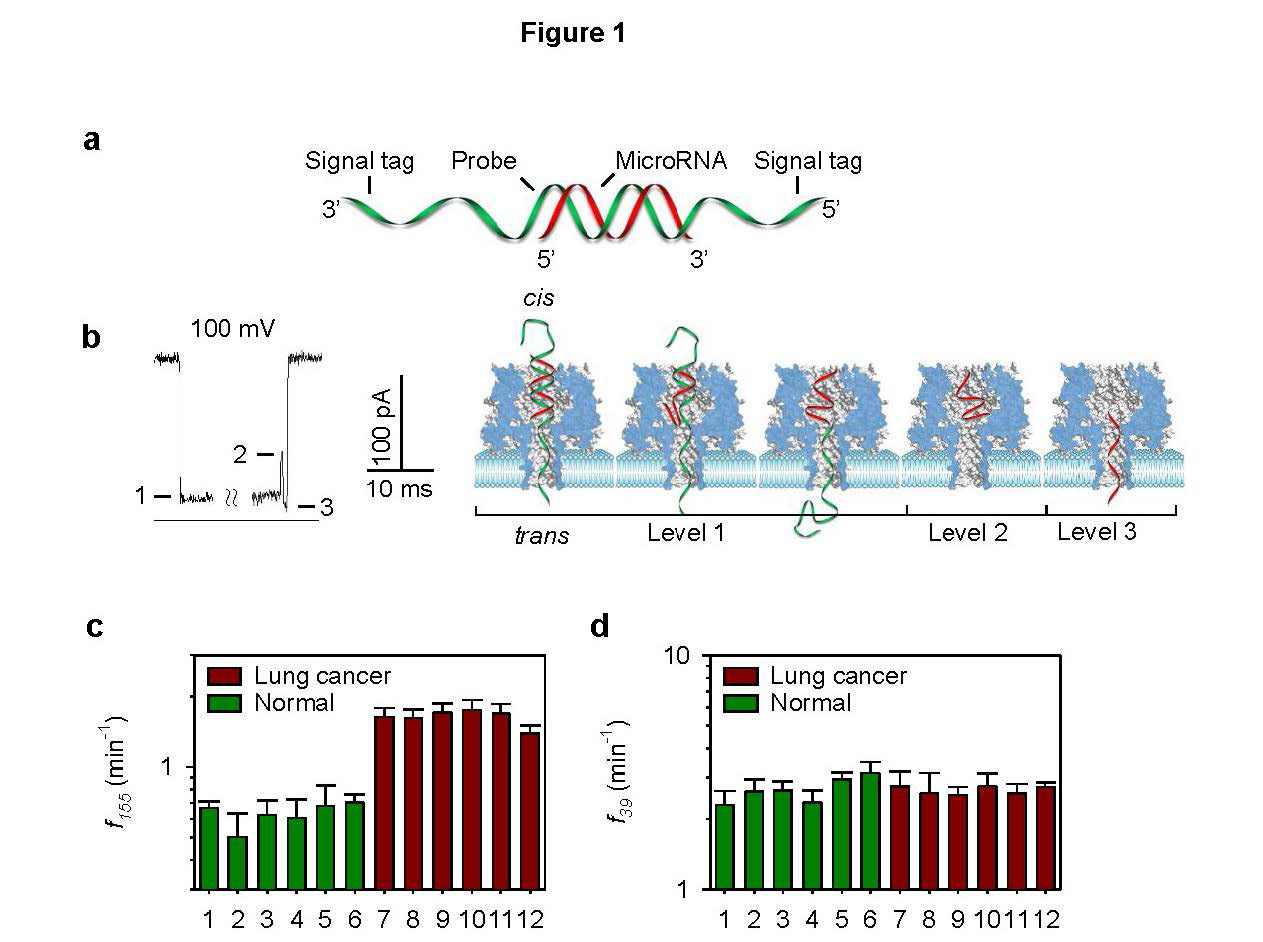
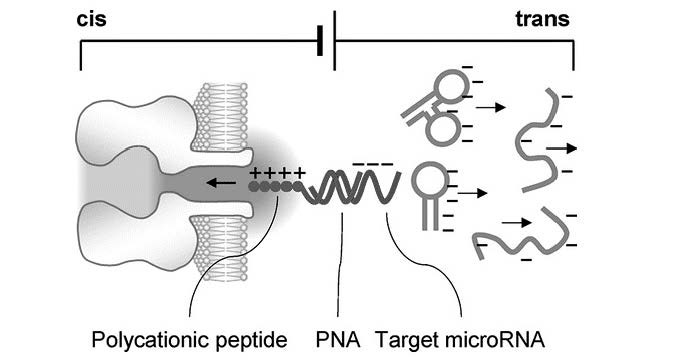
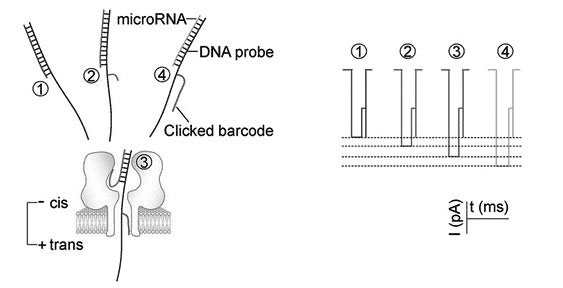
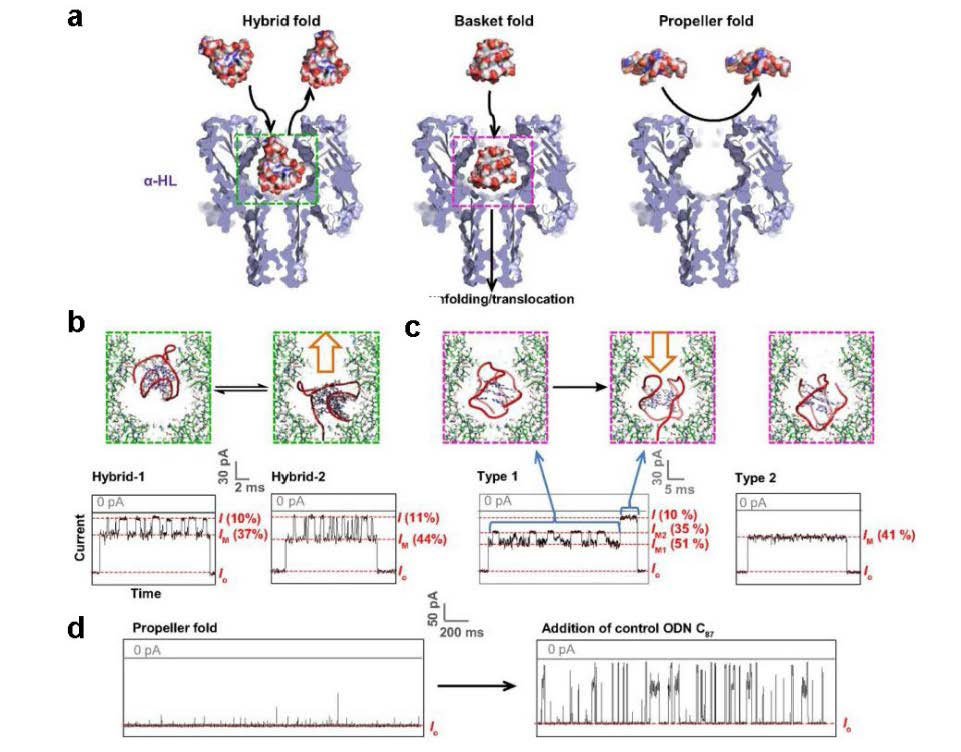
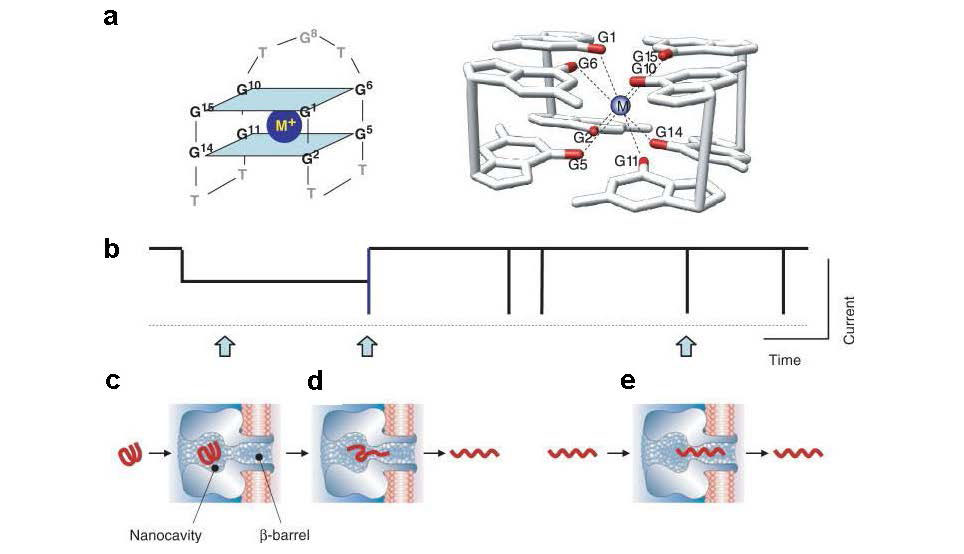
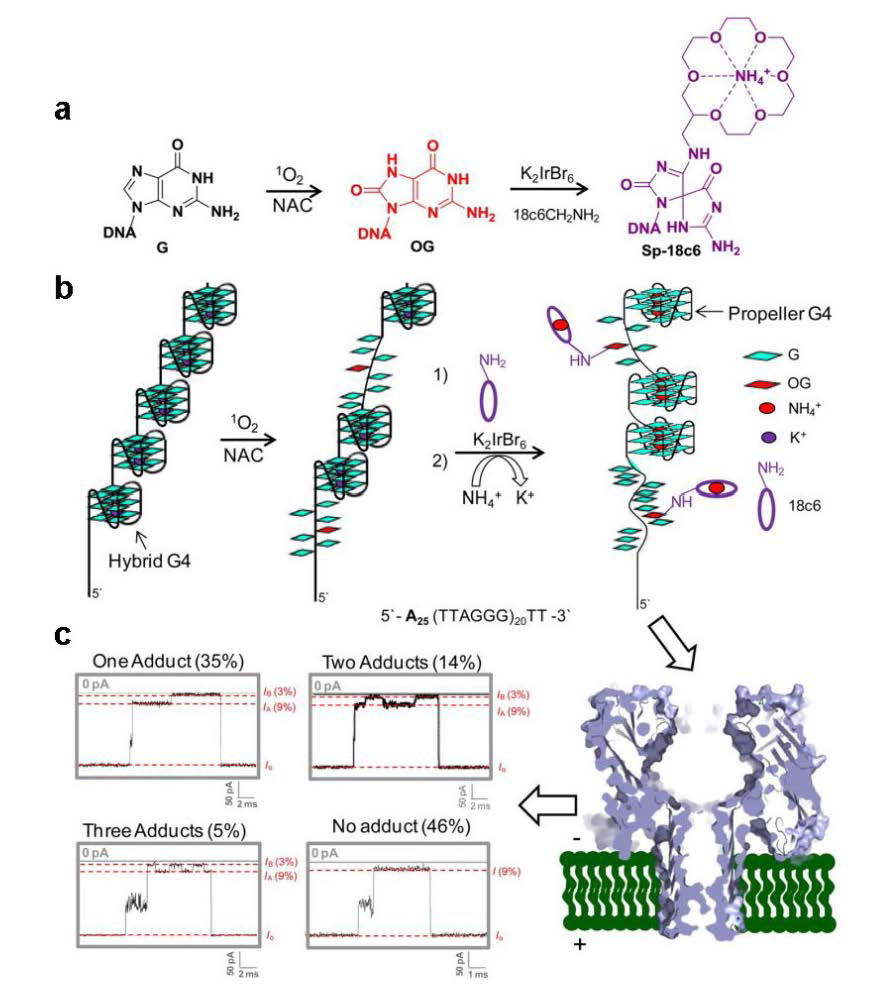
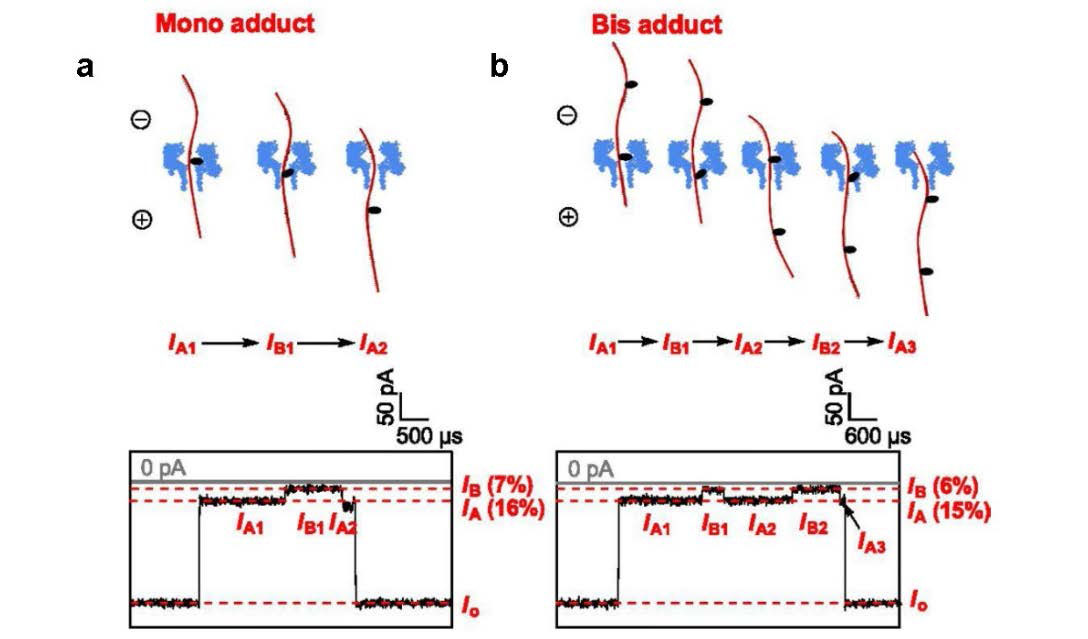
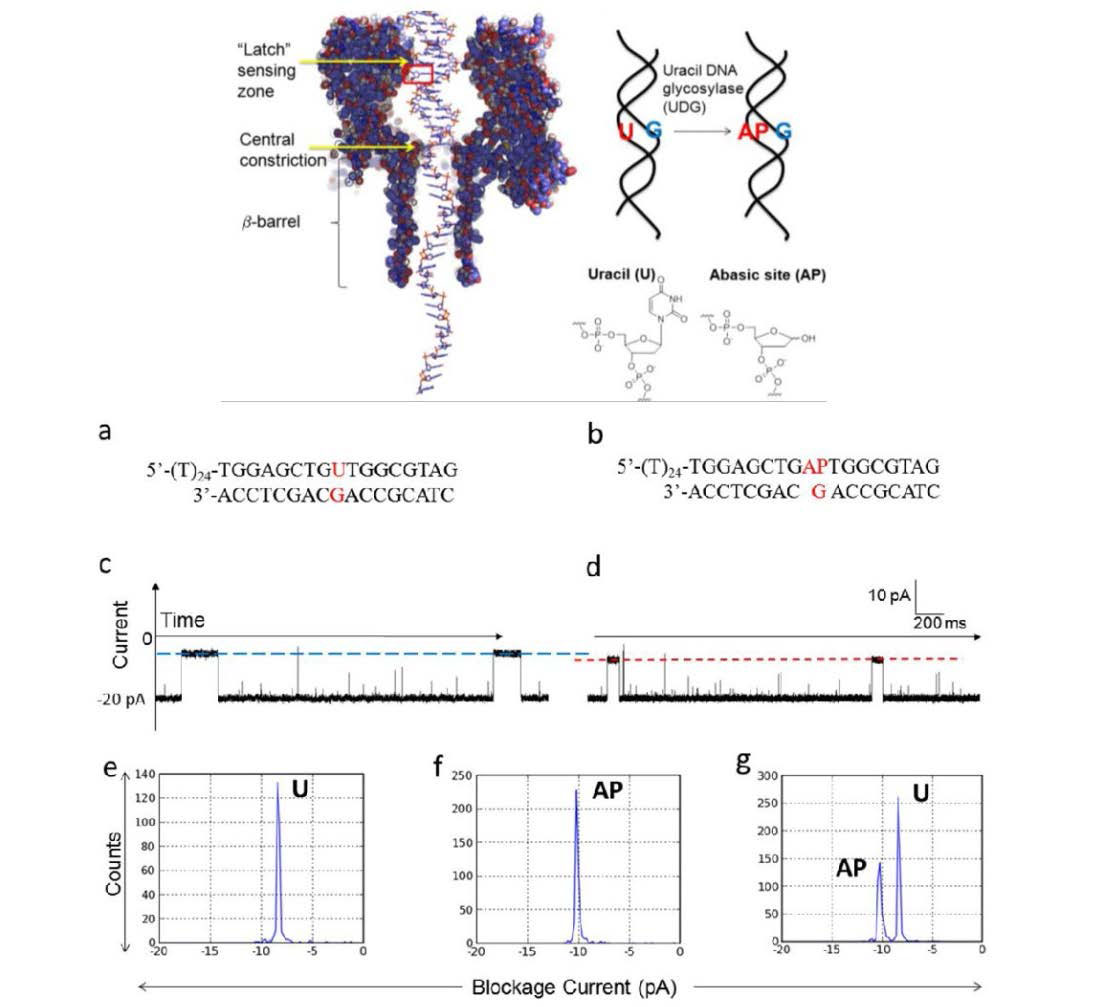
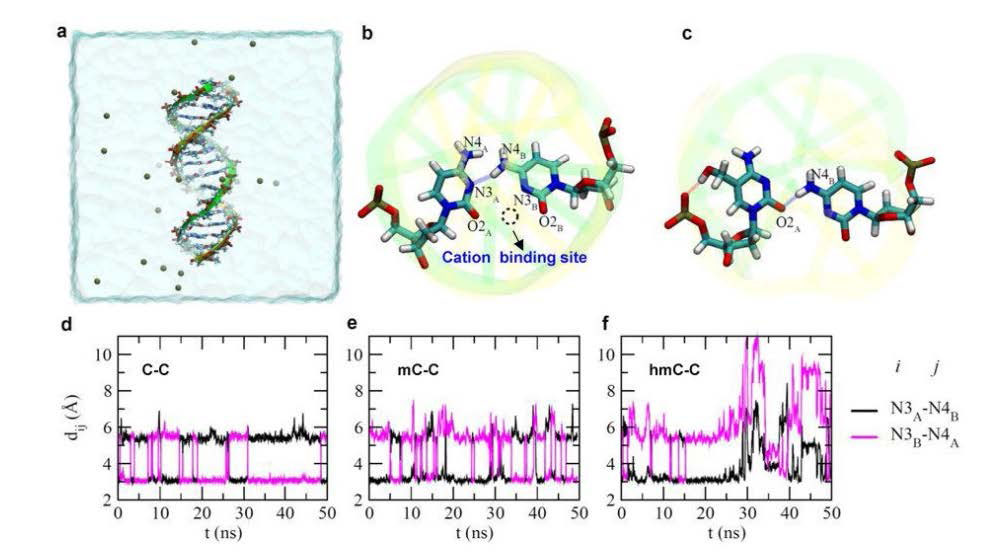
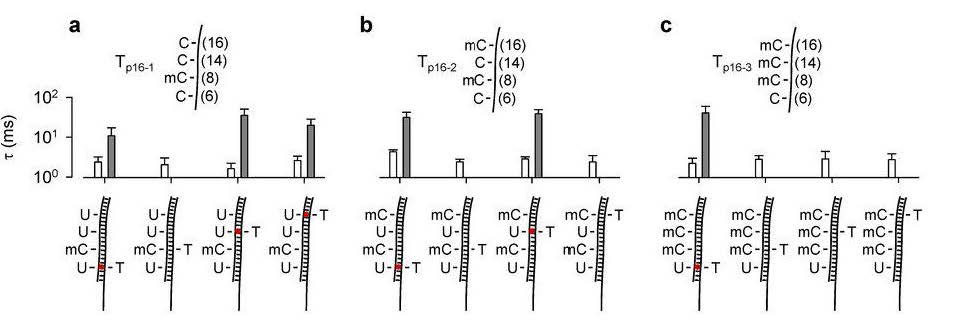


 DownLoad:
DownLoad: